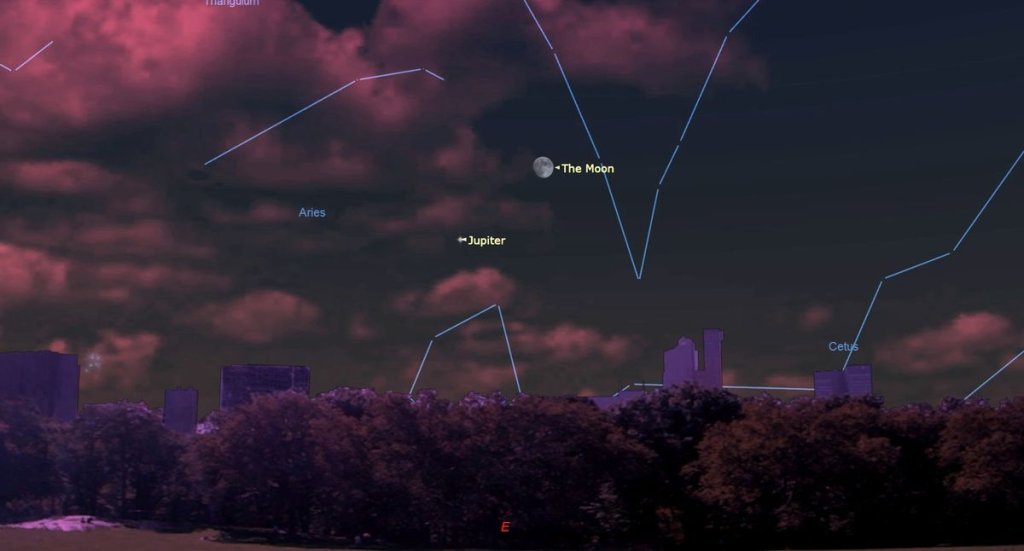The moon will meet up with Jupiter tonight in a gorgeous post-Thanksgiving meet up.
The moon will be almost fully illuminated during the meeting, with the Full Beaver Moon rising just two nights later on Monday, Nov. 27. From New York City, the rendezvous between the moon and Jupiter will be visible soon after they rise in the east at around 3:40 p.m. EST (2040 GMT), according to In the Sky. The 12-day-old moon will be under 5 degrees north of Jupiter, with both celestial objects located in the constellation of Pisces, the Fishes.
During the close encounter, both objects will be quite bright and unmistakable in the night sky. The moon will have a magnitude of -11.7, while the solar system’s largest planet, Jupiter, will be at magnitude -2.8, with the minus prefix indicating particularly bright objects over Earth.
The celestial bodies will disappear from view in the west at around 5 a.m. EST (1000 GMT) on Saturday, Nov. 25.
Related: Night sky, November 2023: What you can see tonight
What are you waiting for? Get a telescope and check out craters on the moon or the four largest moons of Jupiter! We recommend the Celestron Astro Fi 102 as the top pick in our best beginner’s telescope guide.
Despite this being a close approach — officially referred to as an “appulse” — the waxing gibbous 93% illuminated moon and Jupiter will still be too widely separated to fit in the narrow field of view of a telescope. The two celestial bodies should be visible together in the wider field of view of binoculars, however.
This close approach is also the result of our vantage point of view from Earth, the proximity of the moon, and the distance to Jupiter. The two bodies still remain vastly separated in the actual solar system.
The moon is around 238,855 miles (384,400 kilometers) away from Earth, while Jupiter is an average of 444 million miles (715 million km) away. As a consequence of this, the Earth-moon system would fit within the average distance between our planet and Jupiter around a whopping 1858 times over.
At its furthest, Jupiter is around 601 million miles (967 million km) away from Earth and the moon, and even when it is at its most proximate to our world, the gas giant planet is still 365 million miles (588 million km) away. Thus the variation in distance between Earth and Jupiter varies by 236 million miles, and that change in distance alone is vast enough to accommodate the Earth-moon system within it 988 times!
If you are hoping to catch a look at the moon in conjunction with Jupiter, our guides to the best telescopes and best binoculars are a great place to start.
If you’re looking to snap photos of the night sky in general, check out our guides on how to photograph planets or how to photpgraph the moon, as well as our lists of the best cameras for astrophotography and best lenses for astrophotography.
Editor’s Note: If you snap an image of the moon and Jupiter and would like to share it with Space.com’s readers, send your photo(s), comments, and your name and location to spacephotos@space.com.

